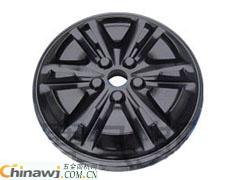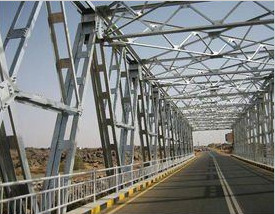First, the process profile "QPQ" is the abbreviation of the English "Quench-P0lish-Quench". The original meaning is quenching, polishing and quenching.
First, the process introduction
"QPQ" is an abbreviation for "Quench-P0lish-Quench" in English. The original meaning is quenching, polishing and quenching. After the salt bath composite treatment, in order to reduce the surface roughness of the workpiece, the surface of the workpiece can be polished once and then oxidized in the salt bath, which requires high precision parts and workpieces with high surface roughness. It is very necessary. It is called QPQ salt bath composite treatment technology in China. QPQ salt bath composite treatment technology can greatly improve the wear resistance and corrosion resistance of metal surface, and the workpiece hardly deforms. It is a new metal surface strengthening modification technology. This technology realizes the compounding of the nitriding process and the oxidation process; the compounding of nitride and oxide; the composite of wear resistance and corrosion resistance; the combination of heat treatment technology and anti-corrosion technology.
QPQ salt bath composite treatment technology was invented by German company in the 1970s. After decades of continuous development and improvement, the application range is wider and wider, so it is considered to be a great progress in the field of metal surface strengthening technology abroad. It is called a new metallurgical method. At present, QPQ salt bath composite treatment technology has also been widely promoted and applied in China, especially in automobiles, motorcycles, shaft products, electronic parts, textile machines, machine tools, electrical switches, and tooling.
Second, technical characteristics:
1, good wear resistance
In the QPQ process, the metal material reacts with the salt bath liquid at an operating temperature of 570 ± 10 ° C to form a layer of a dense compound layer of excellent quality on the metal surface. The compound is completely composed of ε-iron nitride, which can effectively improve the hardness and compactness of the metal surface, so that the metal surface has good wear resistance. The hardness of the surface of the metal material after treatment depends mainly on the alloying elements in the steel. The higher the alloying element content, the higher the hardness of the layer. According to the hardness of the layer, the commonly used materials can be divided into the following categories:
(1) Carbon steel, low alloy steel
Representative steel number: 20, 45, TiO, 20Cr, 40Cr and so on. Surface hardness of the layer: 500-700HV
(2) alloy steel
Representative steel number: 3CrW8V, Crl2MoV, 38CrMoAl, 1Crl3 - 4Cr13, and the like. Surface hardness of the layer: 850-1000HV
(3) High speed steel, austenitic stainless steel
Representative steel: quenched Wl8Cr4V, W6Mo5Cr4V2 and 1Crl8Ni9Ti isotonic layer surface hardness: 1000-1250HV
(4) Cast iron
Surface hardness of the layer: >500HV
The following figure shows the sliding wear test data of the workpiece of 40Cr material after different treatment methods. Based on the wear value of QPQ of 0.22mg, the wear resistance of QPQ process is 2.1 times of hard chromium plating and 2.8 times of ion nitriding. 23.7 times of induction hardening and 29.4 times of conventional quenching.
2, good corrosion resistance
The following figure shows the neutral salt spray test of 45# steel after QPQ salt bath composite process, chrome plating, hard chrome plating and ordinary blackening treatment with 1Cr18Ni9Ti stainless steel and 1Cr13 material. It can be seen that the corrosion resistance of 45# steel after QPQ treatment is 5 times that of 1Cr18Ni9Ti stainless steel, 70 times that of hard chrome plating, and 280 times that of ordinary blackening. After the other materials are processed by the QPQ process, the neutral salt spray test can reach 100-300 hours.
3, good fatigue resistance
After the QPQ salt bath composite process, the metal surface is introduced and a high residual compressive stress is generated. As a result, various types of fatigue strength are greatly improved. It is proved by experiments that the fatigue strength can be improved by about 100%. Surface defects such as etch and rust.
4, minimal deformation
QPQ salt bath composite treatment technology does not undergo structural transformation below the phase transition point of steel due to low process temperature. Therefore, hardening processes such as quenching, high-frequency quenching, carburizing quenching and carbonitriding which generate large microstructure stress In contrast, the deformation of the workpiece after processing is much smaller. At the same time, since the workpiece is heated at 350-400 °C for 15-20 min after nitriding at 570-580 °C, this will greatly reduce the thermal stress generated when the workpiece is cooled. Therefore, the workpiece is hardly deformed after the QPQ salt bath composite process, which is deformation. The smallest hardening technology can effectively solve the hardening deformation problem that is difficult to solve by conventional heat treatment methods.
5, low carbon environmental protection
The German company Digosha, which invented the process, won the German Environmental Award for this process. In China, the QPQ process has been tested and certified by the relevant environmental protection departments, and has been proved to be pollution-free, non-polluting and free of heavy metals by the actual use of users all over the country. And used to replace some of the more polluting processes such as electroplating.
6, can replace multiple processes, reduce time costs
After being treated by QPQ salt bath composite process, the metal material can improve its hardness and wear resistance while improving its corrosion resistance. Therefore, it can replace the conventional quenching (ion nitriding, high frequency quenching, etc.). Black (chrome plating) and other processes greatly shorten the production cycle and reduce production costs. A large number of production data show that QPQ treatment can save 50% energy compared with carburizing quenching, save 30% cost compared with hard chrome plating, and cost-effective.
Third, the scope of application
1. The most suitable materials:
Various structural steels: blunt iron, Q235, 20, 20Cr, 20CrMnTi, 20CrNiMo, 35CrMo, 42CrMo, 45, 40Cr, 50CrV, 65Mn, 38CrMoAl.
Various tool steels: T7~T12, 5CrMnMo, 5CrNiMo, 3Cr2W8V, GCrI5, HI3 (0.35%C, 1.5% Mo, 5%Cr, 1%Si, 1%V), Cr12MoV, various high speed steel .
Various stainless steels: 0Crl3 ~ 4Crl3, 201, 301, 304, 316, 1Cr18Ni9Ti, 0Crl8Nil2MoTi, 4Cr9Si2, 5Cr21Mn9Ni4N.
Various cast irons: gray iron, malleable iron, ductile iron, wear-resistant alloy cast iron.
Various iron-based powder metallurgy parts
2. Applied industry:
Automobiles, motorcycles, locomotives, internal combustion engines, textile machinery, engineering machinery, light industrial machinery, pump and valve equipment, hydraulic machinery, printing and packaging machinery, chemical machinery, power tools, agricultural machinery, machine tools, tools and molds, high and low voltage electrical switches Wait for the requirements of wear, corrosion, fatigue, anti-seizure and other parts.
3. Typical applications:
Engine valves, crankshafts, cylinder liners, gears, cams, bearings, spindles, sliders, steering arms, automotive wiper ball head shafts, guide rails, hydraulic cylinders, universal joints, connecting pins, various molds, pistons, threaded screws, bolts Nuts, pump bodies, high speed steel drill bits, **, various tools, flanges, key pins, gaskets, housings, etc.
Fourth, technical parameters
Surface hardness and permeability comparison table after conventional material treatment
Material type | Representative steel number | Pretreatment | Nitriding temperature (°C) | Nitriding time (h) | Compound layer (μm) | Total infiltration layer (mm) | Surface hardness HV0.1 |
Carbon steel | 45# | Not processed or tempered | 565 | 1.5 | 17 | 0.3-0.5 | 550-700 |
Carbon steel | 40Cr | Not processed or tempered | 565 | 1.5 | 15 | 0.2-0.4 | 550-700 |
Cold mold steel | Cr12MnMo | High temperature quenching | 540 | 2.5 | 10 | 0.15-0.2 | 900-1000 |
Nitrided steel | 38CrMoAl | Tempering | 570 | 2 | 12 | 0.25-0.4 | 950-1000 |
Mold steel | 3Cr2W8V | Quenching high back | 570 | 2.5 | 11 | 0.15-0.3 | 950-1050 |
Hot die steel | H13 | Tempering | 565 | 3 | 11 | 0.15-0.3 | 950-1100 |
Hot die steel | 5CrMnMo | Quenching | 570 | 3 | 11 | 0.15-0.3 | 650-900 |
High speed steel | W6Mo5Cr4V2 | (tool) quenching | 550 | 0.25 | 2 | 0.05-0.1 | HV0.051000-1200 |
High speed steel | W6Mo5Cr4V2 | (wear parts) quenching | 550 | 2.5 | 11 | 0.15-0.3 | 1000-1200 |
stainless steel | 1Cr13; 4Cr13 | Quenching | 570 | 2.5 | 10 | 0.1-0.2 | 900-1000 |
stainless steel | 1 Cr18Ni9Ti | Quenching | 570 | 2.5 | 10 | 0.1-0.2 | 950-1100 |
stainless steel | OCr18Ni12Mo2Ti | Quenching | 570 | 2.5 | 8 | 0.1-0.2 | 900-1100 |
Carbon structural steel | 08;10;10F | annealing | 570 | 2.5 | 15 | 0.3-0.5 | 500-650 |
Carbon structural steel | 35;40 | Not processed or tempered | 570 | 2.5 | 15 | 0.3-0.5 | 550-700 |
Bearing steel | G Cr15 | Quenching, annealing | 565 | 2 | 10 | 0.15-0.3 | 800-1000 |
Alloy structural steel | 50 Mn | annealing | 520 | 2 | 12 | 0.2-0.4 | 550-700 |
Alloy structural steel | 30CrMo-35CrMo | Quenching, annealing | 565 | 2 | 15 | 0.25-0.4 | 600-750 |
Alloy structural steel | 38CrMoAlA- | Quenching, annealing | 570 | 2 | 12 | 0.25-0.4 | 600-800 |
38CrWVAlA | |||||||
Alloy structural steel | 38CrAlA- | Quenching, annealing | 570 | 2 | 12 | 0.25-0.4 | 600-800 |
40CrNiMoA | |||||||
Gray cast steel | HT200 | Quenching, annealing | 570 | 3 | 15 | 0.15-0.3 | 700-900 |
Ductile iron | QT20-60 | Not processed | 570 | 3 | 15 | 0.15-0.3 | 600-800 |
Remarks: 1. Before the QPQ salt bath compounding process, complex parts need to be tempered at a temperature above 580 °C and then slowly cooled and quenched. In order to compensate for the slight expansion after the treatment, precise machining parts have a machining allowance of 10 ± 2 μm in the diameter direction.

Http://news.chinawj.com.cn Submission:
Comprising a dynamic network of bridges, paths, and tree canopy walkways that are populated with engaging gathering points and interactive features, zhong da design offers a close-up, four-season experience of the 54-acre forest of native northern pine from a variety of unexpected vantage points. On the journey through the woods, visitors encounter a series of [right-brained" experiences involving a progression of open fields and dark forests. People are not constrained to staying on trails; the more they wander, the closer they get to nature and opportunities for introspection.

pedestrian bridge design,prefabricated pedestrian bridges,pedestrian bridge cost,prefab bridges
Zhongda Steel Structure , http://www.zhongdametal.com